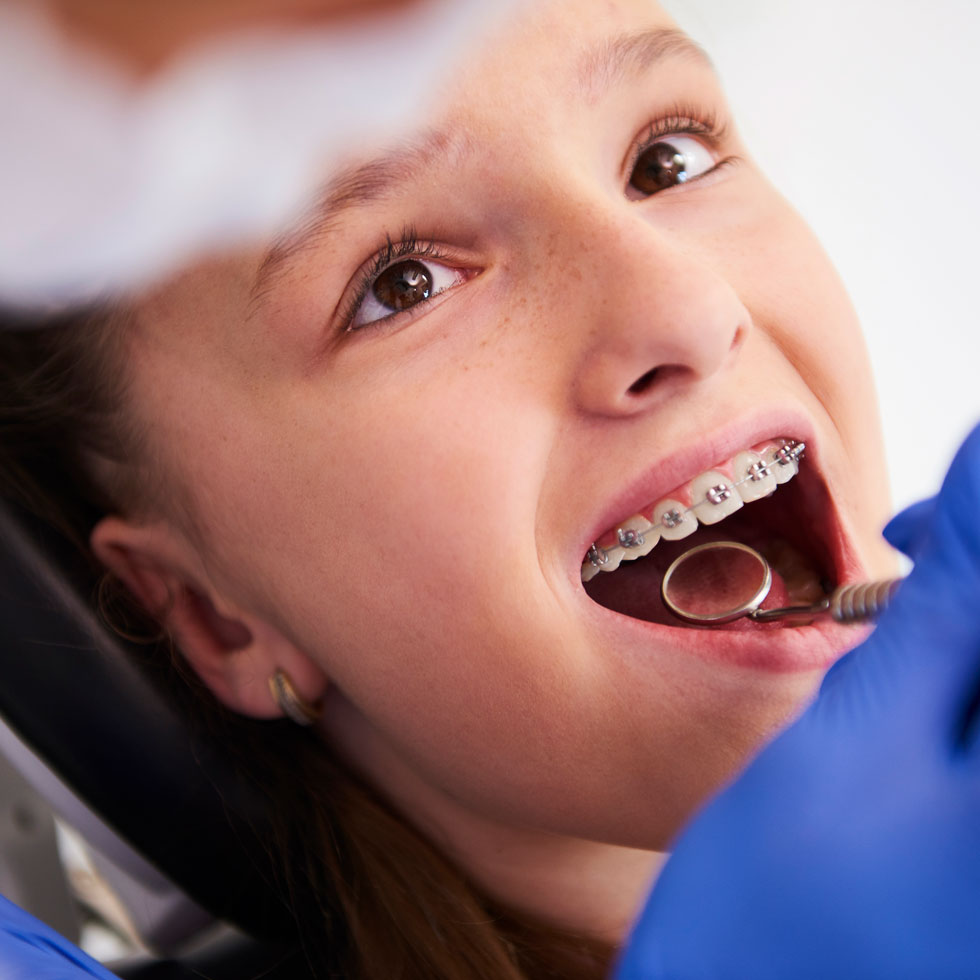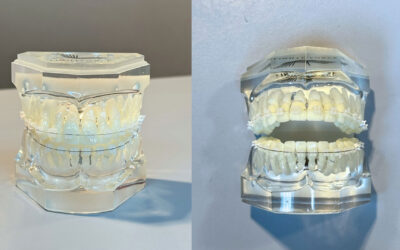So, you’re curious about what orthodontic treatment looks like, or, perhaps you’ve just had your bonding appointment and want to know a little more about the process, and what to expect in the next few days. Let’s take a deep dive into what the first week of wearing braces looks like, and some tips and tricks to make starting your treatment as easy as possible.
Before your bonding appointment
Before receiving their bonded bands, brackets, and archwires, some patients are required to wear separators for approximately two weeks. Commonly referred to as “spacers,” separators are small, doughnut shaped elastics wedged between the back teeth (premolars and molars) to create sufficient space in which the orthodontist can insert a tooth brace or molar band, or to fit an expander with metal rings. Many people ask if separators are painful. Some patients report a tenderness after separators are first placed or within a few hours after, as the separators start working immediately to move the teeth; more commonly, patients report feeling like food is stuck between the teeth—more of an annoyance rather than painful. For patients who do experience moderate pain, over-the-counter medications like Tylenol should provide relief, especially when used in conjunction with frequent warm salt water rinses. Not everyone is required to wear spacers before their braces are applied; some patients already have adequate space to place any required appliances.
At your bonding appointment
Now it’s time to apply the braces to your teeth! Your bonding appointment will be one of the longer appointments of your orthodontic treatment and typically takes one hour. Dr. Daia and his assistants will isolate and prep each tooth individually by drying the tooth surface and carefully adhering each bracket. After the bands and brackets are placed, an archwire is inserted and “tied in” with small elastic bands that go around each metal bracket. The elastics, commonly referred to as “ties,” come in a variety of colors for patient preference. Once complete, Dr. Daia and staff will educate you on taking care of your new braces, including how to brush and floss, the importance of regular dental checkups, pain remedies, handling orthodontic emergencies, and food to avoid while in treatment.
Will my braces hurt?
Applying the braces to the teeth does not hurt, but it is common for braces to cause some mild discomfort within the first few days of wearing them. In order to realign your smile, braces apply stress on your teeth, often making your gums and teeth sensitive. During this time, it’s best to avoid hard, crunchy, or sticky foods that may put additional stress and pressure on the teeth and gums. Instead, stick to soft or liquid based foods like macaroni and cheese, mashed potatoes, soup, smoothies, yogurt, etc. Check out our oral hygiene page for additional info on foods to avoid and hygiene best practices while in orthodontic treatment.
In addition to mild tooth sensitivity, you may feel some discomfort in your cheeks and lips as your mouth adjusts to the new appliances. You may also notice that a wire may start to migrate, causing the wire to extend in the back of the mouth and potentially causing a poking sensation; this is completely normal during treatment, and is a result of your teeth moving into their new alignment. If irritation occurs, use orthodontic wax to cover problem areas. This works to create a smooth, protective layer between your brackets, wires, and the inside of the mouth. If you’re experiencing pain with a poking wire, simply call our office and our team will be happy to clip the wire to provide relief.
Can I take anything to help with pain?
Yes! Like managing discomfort with separators, over-the-counter medications like Tylenol can provide relief, especially if taken preemptively before your bonding appointment or adjustment appointments. Rinsing with warm salt water also helps to relieve any irritation you may have and help promote healing throughout your treatment.
With these remedies, most patients are able to comfortably manage their orthodontic treatment without any complication. If you’re looking for more information on orthodontic treatment, give our office a call at (248) 652-1244, or contact us online here. We look forward to helping you achieve a beautiful, healthy, pain-free smile!




